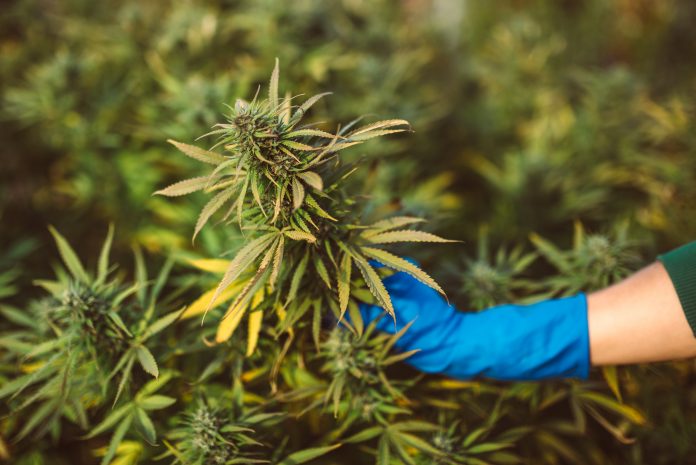A recent European Monitoring Centre for Drugs and Drug Addiction report highlights the need for diversity of cannabis products, increased potency and close monitoring of health effects
Cannabis products have become increasingly diverse in Europe and close monitoring of their potency and potential health effects are essential. These are among the conclusions of a new report published by the European Union (EU) drugs agency (EMCDDA) to mark the International day against drug abuse and illicit trafficking on 26th June.
The report — Developments in the European cannabis market — provides an overview of emerging and established cannabis products in Europe (1).
The report identifies a range of factors behind the current diversity of cannabis products, including policy developments, advances in production and extraction techniques and changing consumer preferences. The creation of legal recreational cannabis markets outside the EU is also noted as driving innovation in the development of new cannabis products, some of which are now appearing on the European market.
“The dynamic nature of the current cannabis market and the diversification of cannabis products available bring considerable challenges”, says EMCDDA Director Alexis Goosdeel.
“New and more potent cannabis products may have serious public health consequences for users. Therefore, monitoring and understanding new trends in cannabis products available to European consumers today is important to inform the policy and regulatory debate.”
Cannabis remains the most widely used illicit drug in Europe. Some 17.5 million young Europeans (15–34 years) are estimated to have used cannabis in the last year (EU-28). Around 1% of adults (15–64 years) in the EU are estimated to be daily, or almost daily, cannabis users. In 2017, some 155,000 people entered drug treatment in Europe for problems related to this drug, of those around 83,000 were entering treatment for the first time. Cannabis is now the substance most often named by new entrants to specialist drug treatment services as their main reason for contact (2).
Cannabis contains many different chemicals, the best-known being Δ9-tetrahydrocannabinol (THC) — largely responsible for the intoxicating effects of cannabis — and cannabidiol (CBD).
What are the new products in the European cannabis market?
• Concentrates: These are made by extracting THC from the cannabis plant, often using heat and pressure or volatile solvents or gases. Advances in extraction techniques are yielding high potencies (70%–80% THC). Consuming concentrates can result in high THC exposure and potentially pose a greater risk of psychosis and dependence.
• Edibles: This is an umbrella term referring to foods (often sweets or liquids) containing THC and/or CBD. Adding cannabis products to foodstuffs results in slower onset and longer duration of effects than when smoking cannabis (thus dosing becomes important).
• Synthetic cannabinoids: These man-made chemical substances mimic the effects of cannabis but may be far more potent. Some of these are sold as ‘licit’ replacements for cannabis, however, some are now controlled internationally and/or under national legislation. The first synthetic cannabinoid detected in Europe (JWH-018) was detected in 2008 in products branded as ‘Spice’ (3). Since then, more than 180 synthetic cannabinoids have been reported to the EMCDDA.
• Cannabis-based medicinal and health-orientated products: These include products manufactured to pharmaceutical standards for medicinal use and others with varied composition and descriptions. The report provides a brief overview of approved cannabis-based medicinal products (an EMCDDA in-depth analysis is also available) (4).
Latest developments with established cannabis products
Along with the emerging products on the European cannabis market, there are also challenges arising with the more established forms of the drug. In broad terms, there are two main types of herbal cannabis on European markets: ‘sinsemilla’ or indoor-grown herbal cannabis produced within the EU and imported herbal cannabis. In addition to herbal cannabis, plant material is also used to produce cannabis resin. Morocco is the largest producer of resin available on the European drug market.
Data provided by the EU Member States show that the THC concentration of cannabis products found in Europe over the last decade has increased, raising concerns about potential harms. The estimated mean potency of herbal cannabis doubled from 5% to 10% THC from 2006 to 2016 and cannabis resin potency increased from 8% to 17% THC.
Monitoring tools to capture the cannabis market diversification
The report underlines the need to develop monitoring tools to capture information on these products and their health effects, at national and European level (particularly on cannabis concentrates). From a harm reduction perspective, it will also be advisable to monitor the concentration of CBD in cannabis products.
Finally, having the ability to distinguish illicit cannabis products from cannabis-based medicinal products and unregulated CBD oils will be important for law enforcement in many jurisdictions.
Cannabis, controversies and challenges
The new report is one of several EMCDDA publications and services exploring some of the complex issues in the cannabis policy field. These include analyses of the medical use of cannabis, cannabis and driving (6) and online alert service on the status and recent developments in cannabis policy (6).
References
(1) Developments in the European cannabis market, EMCDDA Papers — www.emcdda.europa.eu/publications/emcdda-papers/developments-in-the-european-cannabis-market (a video is also available with highlights).
(2) European Drug Report 2019 — www.emcdda.europa.eu/edr2019
(3) www.emcdda.europa.eu/publications/thematic-papers/understanding-spice-phenomenon_en — www.emcdda.europa.eu/topics/pods/synthetic-cannabinoids_en
(4) www.emcdda.europa.eu/publications/rapid-communications/medical-use-of-cannabis-and-cannabinoids-questions-and-answers-for-policymaking_en (available in ES, EN, FR).
(5) www.emcdda.europa.eu/publications/joint-publications/cannabis-and-driving (available in ES, DE, EN, FR, PT).
(6) Register for e-mail updates (alert service): www.emcdda.europa.eu/publications/topic-overviews/cannabis-policy/html — www.emcdda.europa.eu/topics/cannabis-policy
European Monitoring Centre for Drugs and Drug Addiction (EMCDDA)
Tel: (351) 211 210 200
info@emcdda.europa.eu
www.emcdda.europa.eu
https://twitter.com/emcdda
https://www.facebook.com/emcdda
hhttps://www.linkedin.com/company/emcdda/
https://www.youtube.com/user/emcddatube
instagram.com/emcdda











